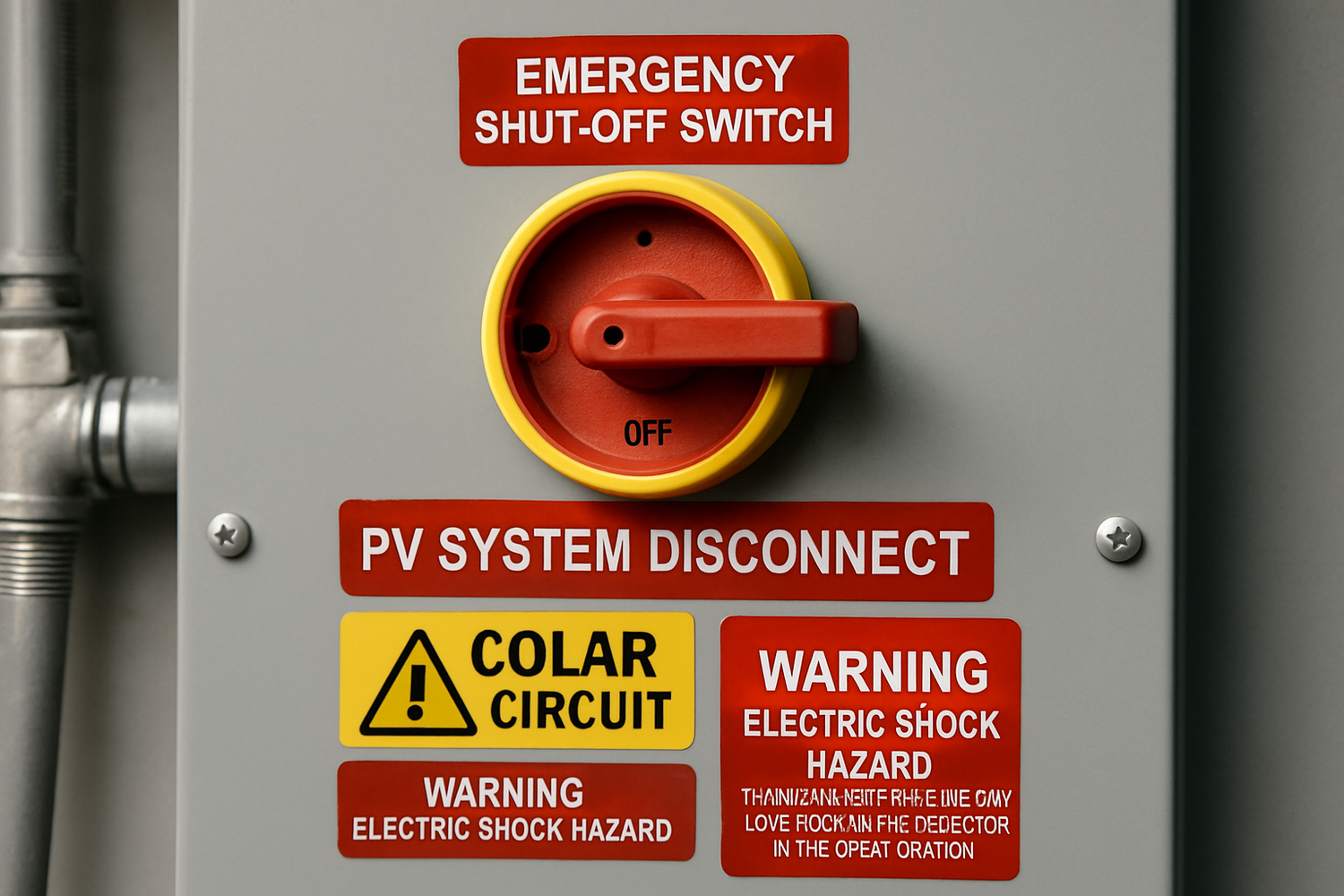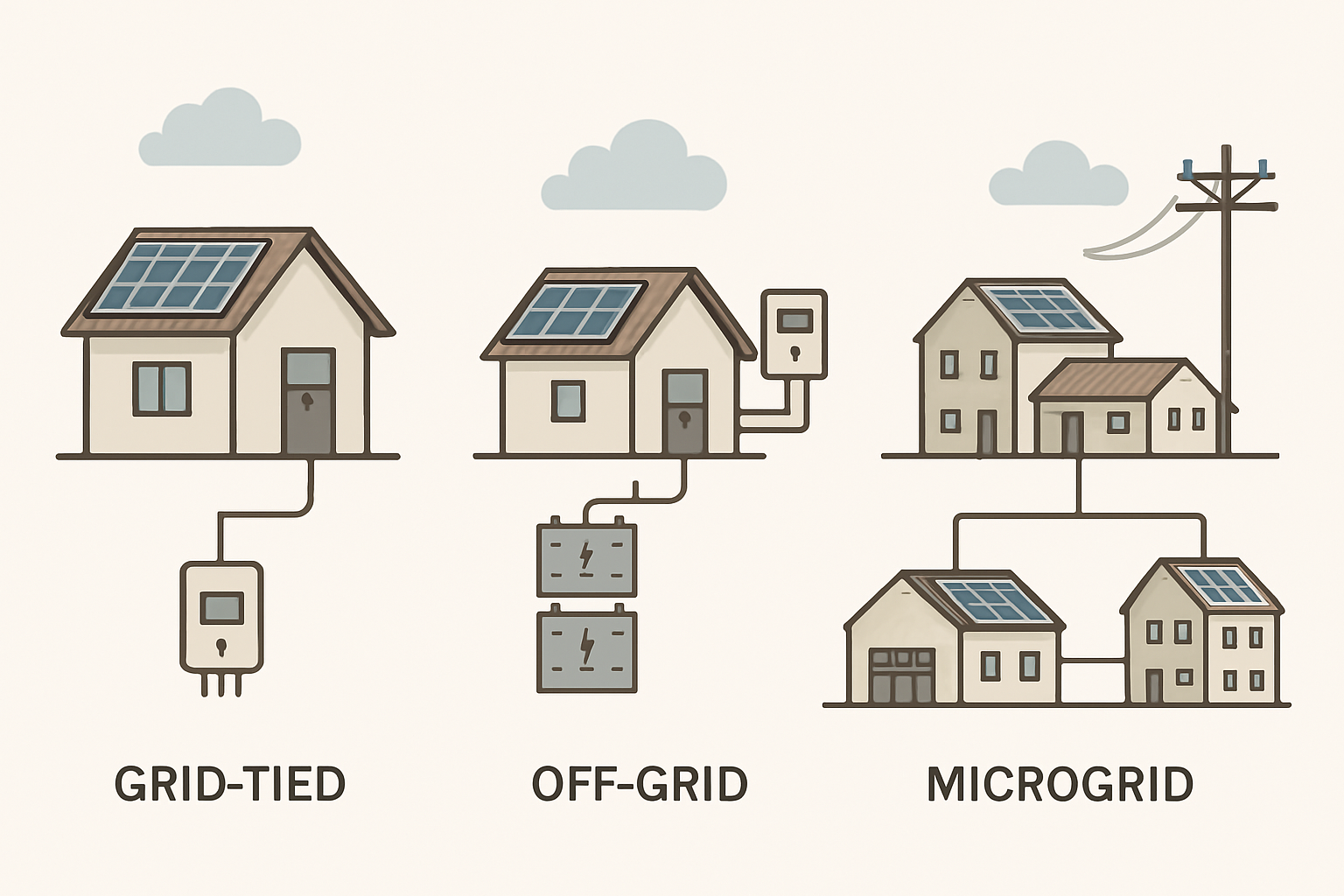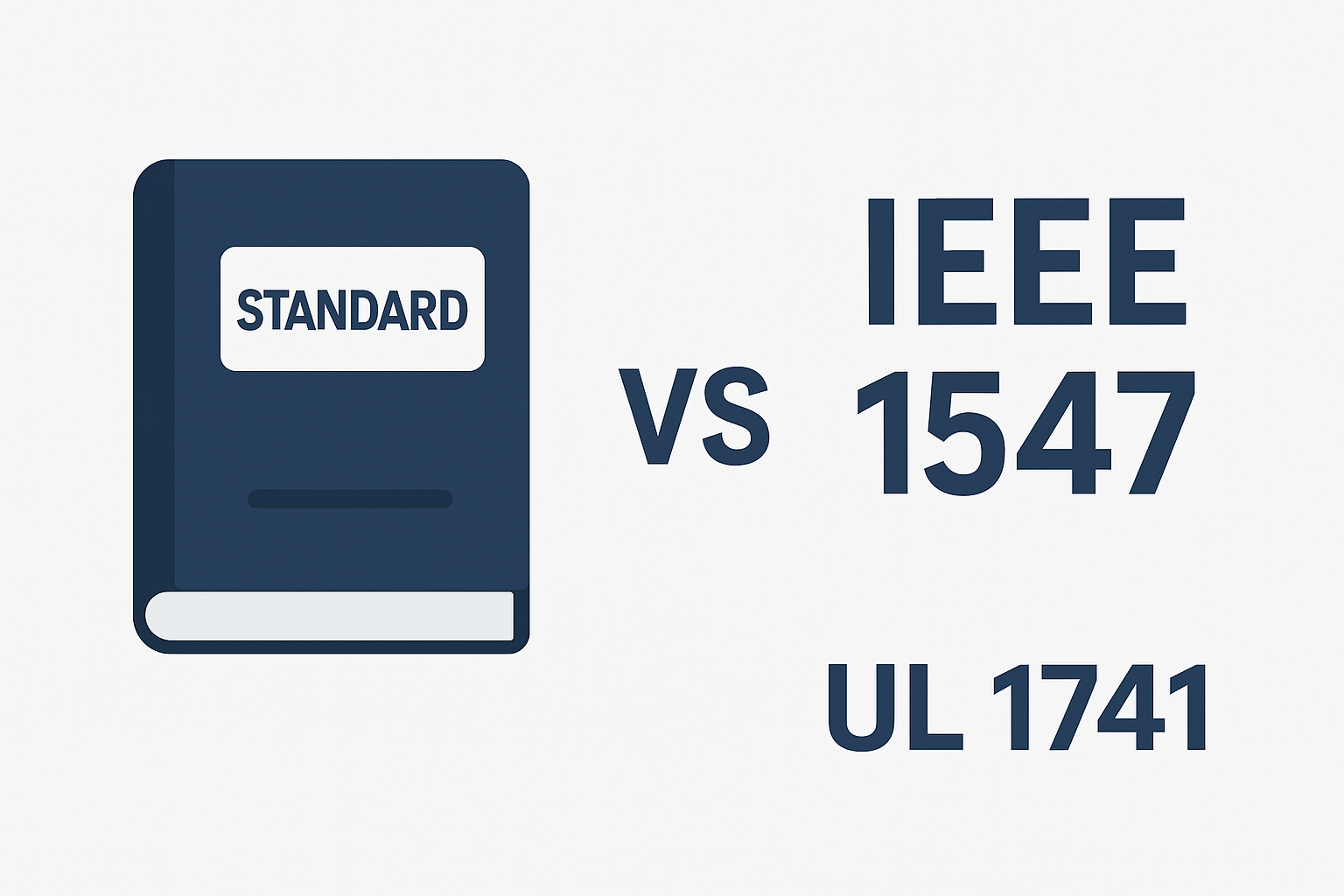When you install a solar energy system, your focus is likely on clean energy and lower utility bills. However, safety is the foundation of any reliable solar installation. The safety rules for a system tied to the utility grid are fundamentally different from those for a standalone, off-grid system. Understanding these distinctions is not just about following regulations; it's about protecting utility workers, your property, and your investment.
This guide breaks down the essential safety notices and compliance standards for both grid-tie and off-grid solar systems. Knowing these rules helps you ensure your system is safe, efficient, and dependable for years to come.
Core Safety Principles: The Great Divide Between Grid-Tied and Off-Grid
The primary difference in safety protocols comes down to one question: is the system connected to the public utility grid? The answer changes everything, from the equipment you use to the labels you must display.
Grid-Tied Systems: Protecting the Lineworker and the Grid
A grid-tied system interacts directly with the utility's infrastructure. Its main safety mandate is to protect the grid and the personnel who maintain it.
The most significant danger is a condition called "islanding." This occurs when a grid-tied solar system continues to send power to the grid during a utility outage. This creates an energized "island" on what should be a dead power line, posing a severe electrocution risk to lineworkers performing repairs.
To prevent this, every grid-tied inverter must have **anti-islanding protection**. This feature automatically detects a grid failure and shuts down the inverter within milliseconds, stopping any power from backfeeding onto the grid. This is a non-negotiable safety function required by law. For more information, you can read about whether portable solar kits are legal to backfeed the grid.
Two major standards govern this behavior:
- IEEE 1547: This is the technical standard for interconnecting distributed energy resources (like solar) with the power grid. It sets the performance requirements for how systems must behave during grid disturbances.
- UL 1741: This is a product safety standard that tests and certifies inverters and other solar equipment to ensure they meet IEEE 1547 requirements, including anti-islanding. An inverter without a UL 1741 listing should not be connected to the grid. To understand this better, see UL 1741 vs IEEE 1547: which listing matters for your inverter?.
Ignoring these standards can lead to significant consequences, including hefty fines and legal liability. It's important to be aware of the 7 compliance gaps that trigger grid-tied anti-islanding fines.
Off-Grid Systems: Self-Reliance and Internal Safety
Off-grid systems are entirely self-contained and do not connect to the utility. Here, the safety focus shifts from protecting the grid to protecting the system itself and its users. Key concerns include overcurrent, short circuits, and battery management.
The heart of an off-grid system is its battery bank. The choice of battery technology is critical for safety. We specialize in solutions using **Lithium Iron Phosphate (LiFePO4) batteries**, which offer superior thermal and chemical stability compared to other lithium-ion chemistries. This inherent safety reduces the risk of thermal runaway and fire.
Proper system design is crucial for off-grid safety. This includes:
- Fuses and Circuit Breakers: These devices protect wiring and components from overcurrent conditions that could cause fires.
- Charge Controllers: A charge controller prevents the battery bank from being overcharged or overly depleted, extending battery life and ensuring safe operation.
- Proper Wiring: Using correctly sized wires and secure connections is essential to handle the system's current without overheating.
If an off-grid system includes a backup generator or a secondary AC source, a transfer switch is necessary to prevent two power sources from feeding the circuits simultaneously. This is a critical step to stop backfeed hazards.
Navigating Regulations and Crafting Effective Safety Notices
Clear and accurate labeling is a cornerstone of solar safety. These notices provide critical information to homeowners, electricians, and first responders during emergencies. The requirements vary significantly between grid-tied and off-grid systems.
Essential Notices for Grid-Tied Installations
The National Electrical Code (NEC) outlines specific labeling requirements for grid-tied systems. These labels must be placed at disconnects, service panels, and other key points. They need to be durable and easy to read. Common required labels include:
- PV SYSTEM DISCONNECT: Identifies the main disconnect for the solar array.
- CAUTION: MULTIPLE SOURCES OF POWER: Alerts personnel that the building is powered by both the utility and a solar system.
- SOLAR PV SYSTEM IS EQUIPPED WITH RAPID SHUTDOWN: Informs firefighters how to de-energize the solar array on the roof.
- System Specifications: Labels indicating operating voltage, current, and other technical details.
The goal of these notices is to provide unambiguous instructions for safely isolating the solar system. Learning how to craft safety notices for grid-tied vs off-grid systems is a key skill for installers. Avoiding common errors is just as important; see the top 9 mistakes in portable solar notices for grid interconnection.
Key Safety Labels for Off-Grid and Portable Systems
For off-grid systems, safety notices are more focused on the user and maintenance personnel. Since there is no grid connection, the labels address internal system hazards, particularly related to the batteries. Important labels include:
- Battery Safety Warnings: Instructions on proper handling, ventilation requirements, and warnings about shock or chemical hazards.
- System Disconnect Procedures: Clear steps for shutting down the system for maintenance.
- Component Specifications: Information about the battery voltage, inverter capacity, and other key data.
Portable systems, such as those used in RVs or for travel, have their own unique set of compliance challenges. When traveling, especially by air, LiFePO4 batteries are subject to specific transport regulations. Always consult a pre-flight safety checklist for LiFePO4 off-grid solar kits. RV users must also navigate a complex landscape of rules, which is covered in the compliance roadmap for RV users.
Hybrid Systems and Advanced Scenarios: Where the Lines Blur
Some systems can operate in both grid-tied and off-grid modes. These hybrid systems offer the best of both worlds—utility savings and backup power—but also introduce more complex safety requirements.
Hybrid Inverters: The Best of Both Worlds?
A hybrid inverter can power your home, charge batteries, and send excess energy to the grid. During a power outage, it can disconnect from the grid and use the battery to power essential loads. This transition is managed by an internal or external automatic transfer switch, which is critical for preventing islanding.
It is a common misconception that standard grid-tied inverters can provide backup power during an outage. They cannot. Without a battery and hybrid functionality, they are designed to shut down for safety. This is explored in detail in Myth vs reality: can grid-tied inverters run in outages safely?. Properly configuring the anti-islanding features on a hybrid inverter is essential for legal and safe operation. You can learn more about how to configure anti-islanding on hybrid inverters legally.
Microgrids and Intentional Islanding
In some advanced applications, a facility or community might be designed to "intentionally island" from the main grid during an outage and operate independently as a microgrid. This is a planned, controlled event that uses sophisticated switchgear to safely disconnect from and reconnect to the utility. It is fundamentally different from the dangerous, unintentional islanding that standard anti-islanding protection is designed to prevent. These systems require advanced safety layers, as detailed in this case study on microgrid safety. Determining which notice applies is critical for these complex setups.
Future-Proofing Your System: Evolving Codes and Best Practices
The solar industry is dynamic, and so are its safety standards. As more renewable energy is added to the grid, the codes and regulations continue to evolve to ensure stability and safety.
The Evolution of Grid Codes
Grid codes are becoming more sophisticated. Modern standards like IEEE 1547-2018 require inverters to be "smarter" by actively supporting the grid during minor fluctuations instead of simply disconnecting. This helps create a more resilient and stable power grid for everyone. As technology advances, you can expect to see further updates, as discussed in the 2025 outlook on evolving grid codes.
Choosing a Reliable and Compliant System
The best way to ensure safety and compliance is to choose high-quality components from an experienced manufacturer. At ANERN, we provide reliable and scalable energy solutions built on a foundation of safety. Our focus on high-performance, safe **LiFePO4 batteries** and integrated **home energy storage systems (ESS)** ensures that your path to energy independence is secure.
A safe system is also a high-performing system. Understanding the metrics of your energy storage, such as battery cycle life, depth of discharge, and efficiency, is key to maximizing your investment. For an in-depth look at these performance indicators, you can review the Ultimate Reference for Solar Storage Performance.
Your Path to a Safe and Secure Energy Future
The safety requirements for solar energy systems are clear and distinct. Grid-tied systems prioritize the protection of the external utility grid, with anti-islanding as the paramount feature. Off-grid systems focus on the internal safety of the system and its users, with battery protection and proper component sizing as key elements.
Understanding these differences is the first step toward building a system that is not only powerful but also fundamentally safe. By selecting certified equipment and adhering to the correct installation and labeling standards, you can confidently achieve your energy goals.
Disclaimer: This article is for informational purposes only and does not constitute legal or investment advice. Always consult with a qualified professional and your local authorities to ensure your solar installation complies with all applicable codes and regulations.





Leave a comment
All comments are moderated before being published.
This site is protected by hCaptcha and the hCaptcha Privacy Policy and Terms of Service apply.